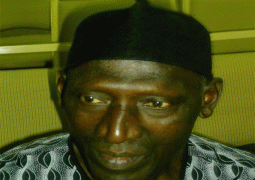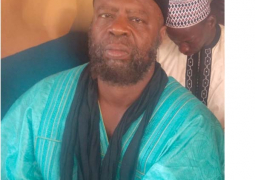
UNDP
media release
Banjul,
6 March – How big and thick is the Glass Ceiling? New analysis suggests that it covers all
aspects of women’s lives – including the household – and that it is
constructed, not of glass, but of pervasive bias and prejudice against women
held by both men and women worldwide.
These
were the findings behind the new Gender Social Norms Index released by the
United Nations Development Programme (UNDP) today. This index measures how
social beliefs obstruct gender equality in areas like politics, work, and
education, and contains data from 75 countries, covering over 80 percent of the
world’s population.
This
new analysis reveals that, despite decades of progress closing the equality gap
between men and women, close to 90 percent of men and women hold some sort of
bias against women, providing new clues to the invisible barriers women face in
achieving equality, and a potential path forward to shattering the Glass
Ceiling.
According
to the index, about half of the world’s men and women feel that men make better
political leaders, and over 40 percent feel that men make better business
executives and that men have more right to a job when jobs are scarce. 28
percent think it is justified for a man to beat his wife.
Information
is also available on how bias is changing in around 30 countries. It shows thatwhilein some countries there
have been improvements, in others, attitudes appear to have worsened in recent
years, signaling that progress cannot be taken for granted.
“We
have come a long way in recent decades to ensure that women have the same
access to life’s basic needs as men. We have reached parity in primary school
enrollment and reduced maternal mortality by 45 percent since the year 1990.
But gender gaps are still all too obvious in other areas, particularly those
that challenge power relations and are most influential in actually achieving
true equality. Today. the fight about gender equality is a story of bias and
prejudices.” said Pedro Conceição, head of UNDP’s Human Development Report
Office.
The
“Power Gap”
This
new analysis sheds light on why enormous “power gaps” still exist between men
and women in our economies, our political systems, and our corporations despite
real progress closing gender inequalities in basic areas of development like
education and health; and the removal of legal barriers to political and
economic participation.
For
example, while men and women vote at similar rates, only 24 percent of
parliamentary seats worldwide are held by women and there are only 10 female
heads of government out of a possible 193. Women in the labour marketare paid
less than men and are much less likely to be in senior positions: less than 6
percent of CEOs in S&P 500 companies are women. And while women work more hours than men,
this work is more likely to be unpaid care work.
“The
work that has been so effective in ensuring an end to gaps in health or
education must now evolve to address something far more challenging: a deeply
ingrained bias – among both men and women - against genuine equality. Current
policies, while well intentioned, can only take us so far,” said Achim Steiner,
administrator of UNDP.
The
2020 marks the 25th anniversary of the Beijing Declaration and Platform for
Action (Beijing+25), the most visionary agenda on women’s empowerment to date.
UNDP
is calling on governments and institutions to use a new generation of policies
to change these discriminatory beliefs and practices through education, and by
raising awareness and changing incentives. For instance, by using taxes to
incentivize fairly sharing child-care responsibilities, or by encouraging women
and girls to enter traditionally male-dominated sectors such as the armed
forces and information technology.
“#MeToo,
#NiUnaMenos, #TimesUp. #UnVioladorEnTuCamino. The women’s rights demonstrations
we’re seeing across the world today, energized by young feminists, are
signaling that new alternatives for a different world are needed,” said Raquel
Lagunas, UNDP Gender Team Acting Director.
“We must act now to break through the barrier of bias and prejudices if
we want to see progress at the speed and scale needed to achieve gender
equality and the vision laid out in the Beijing Declaration over two decades
ago and the Sustainable Development Goals.”



